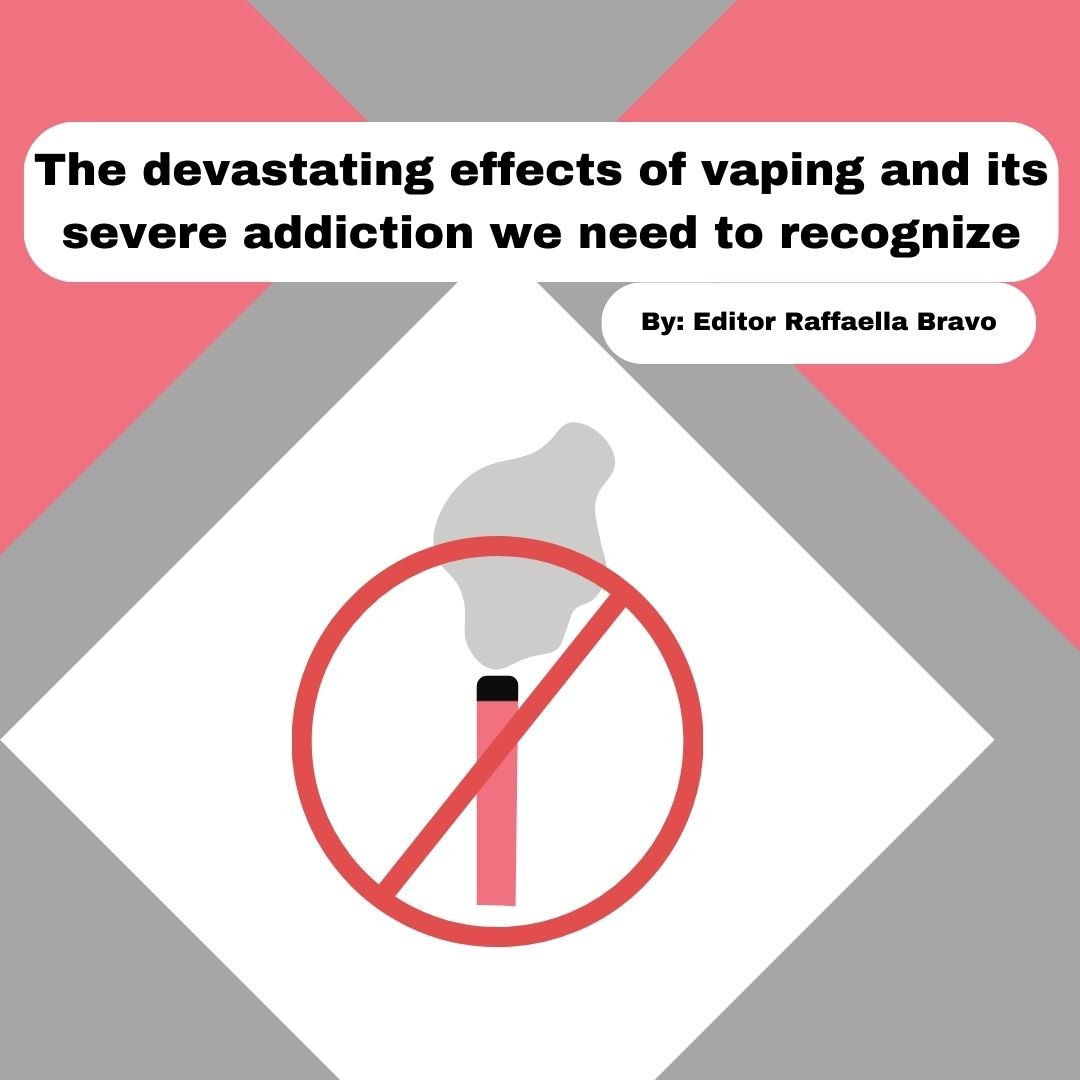Vaping and addiction
Photo of cartoon vape with story title (Raffaella Bravo, The Puma Prensa)
By Raffaella Bravo, editor
What many people seem to overlook concerning vaping and nicotine usage at school is that, most of the time, it isn't what students want to be doing. Nicotine is a highly addictive drug that is widespread among teens; yet, receives intense backlash from adults, peers, and the media. Despite this backlash, it's very difficult for students to do anything about it. Nicotine has very serious concerns that need to be addressed; We need to do our best to stop its usage among students. Vaping affects memory, concentration, self-control, and attention, especially in developing brains like teens. Moreover, nicotine, the primary drug ingested in vaping, is also known as a gateway drug into meth and other more serious and addictive drugs that give people a buzz. Despite this problem’s urgent importance, we need to take into consideration how to handle this problem with care, as addiction is hard to get passed and an insecurity for many teens.
When discussing the complex issue of discouraging vaping within a school environment, students offered varied perspectives on the most effective administrative approaches. Senior Marissa Caesare stated, “The best way to get rid of nicotine addiction is for the school to offer useful resources to students.” Additionally, she stated, “It's good for the school to place authority over this issue because it is a drug being used at school; however, we need to take into consideration that people are genuinely addicted to nicotine.”
Recently, in this school year, students caught vaping have been sent to a meeting to learn about the negative effects of vaping, and Marissa agrees that this decision is the right step in helping this issue.
Domenic Kayed, senior, critiques the use of punishment, believing that students "need help, not punishment." He suggests that the school’s approach is counter-productive and only builds student resistance.
Another anonymous student commented that punishment is unnecessary, stating, “let students make the choices that they will make; you can't have a direct influence.” They pointed out that administrators don't make much of a difference in these students' lives, and it's not their responsibility to change them through punishment. However, they did recommend that spreading information was better than spreading punishment, “The school can host a mandatory assembly on the effects of vaping to help [students]make a change in their life.” They believe that these meetings would create a collective understanding,inspiring positive life changes, and that spreading awareness and providing information could be more effective than authoritative punishments in addressing the challenges posed by vaping in the school community.
Students also find the road to recovering from addiction very lengthy and full of setbacks. They commented that this isn't an issue that can be resolved in a day or even a week. One anonymous source said that it took them 3 months to fully break their addiction to nicotine, and there were many setbacks on their journey. Another anonymous source is still dealing with their addiction and is not ready to let go just yet: “Whenever I try to withhold for even a couple hours, the cravings are just so intense, and I start to break down. I don't want to be addicted and sometimes it feels like I don't have a choice.” Nicotine addiction is a serious problem among many teens, not helped by them feeling as though many people don't understand the difficulties that surround this issue. We need to provide information and resources to students dealing with these problems instead of harsh punishments that have little to no success in helping students with their addiction.
Nicotine is a drug that shouldn't be in school, and we should do our best to remove it, but not in the way that most seem to think. We need to stop trying to solve this problem with suspensions and detentions as they don't address the root of the issue. We need to stop with the temporary fixes because they aren’t helping our students and peers. What we need to do is clear: help these teens. We need to provide resources and kindness and work in collaboration with our struggling peers to come to a healthy, long-lasting life improvement.

